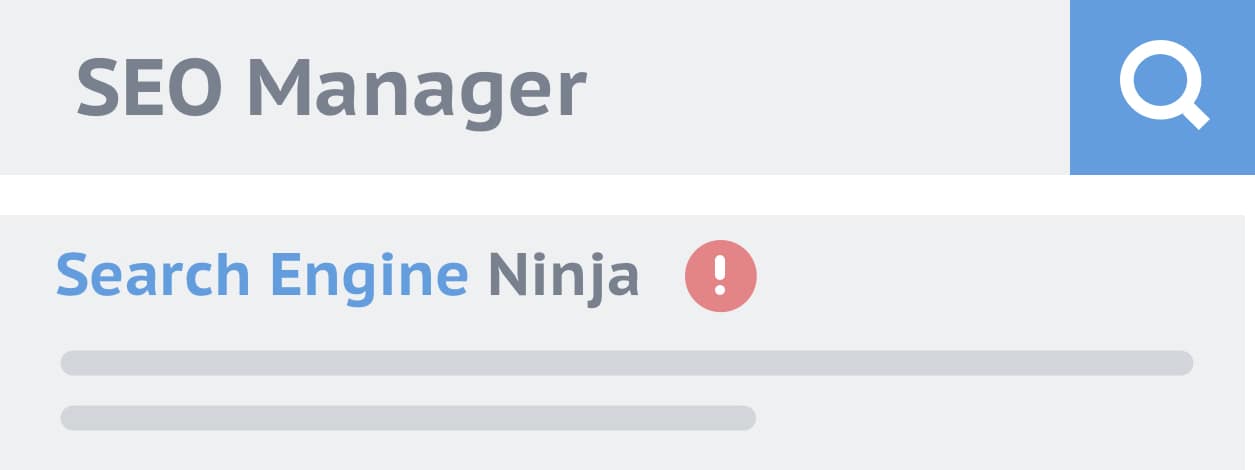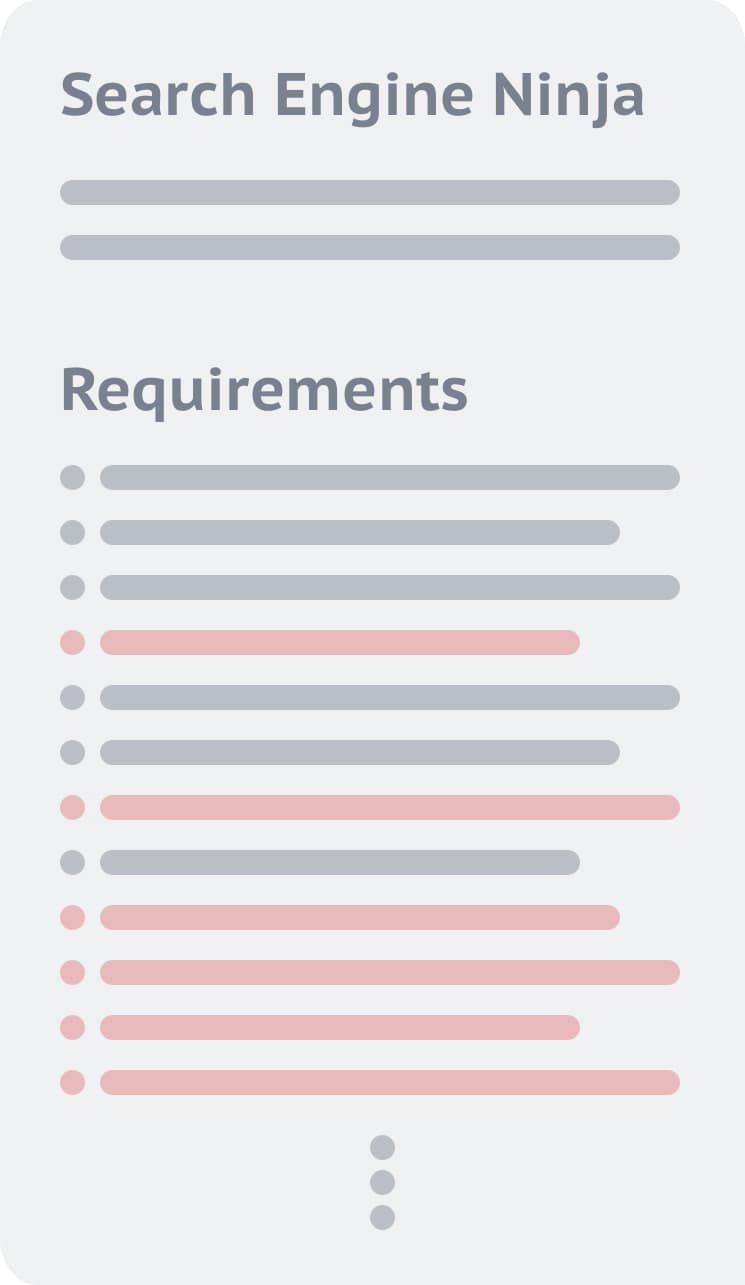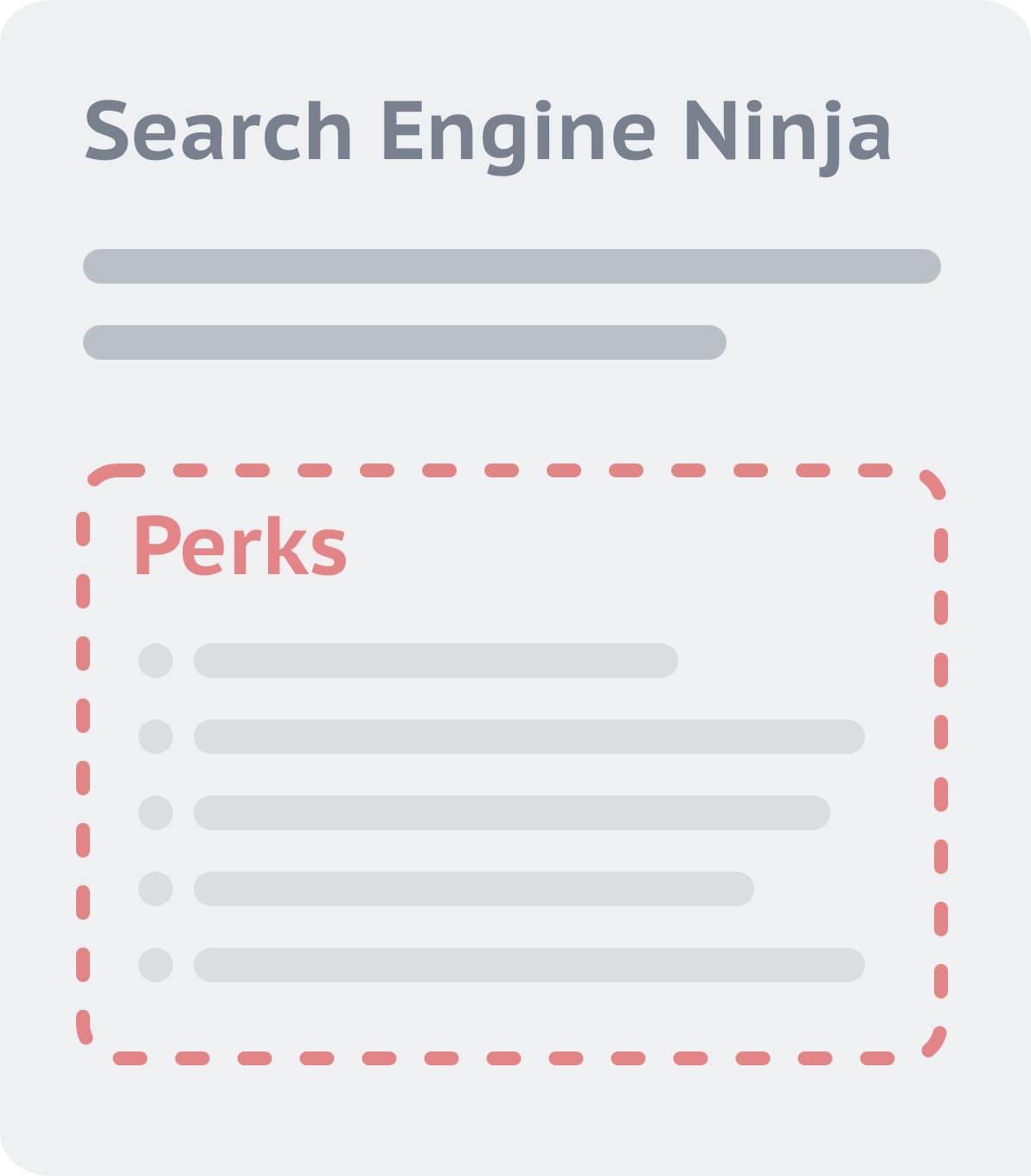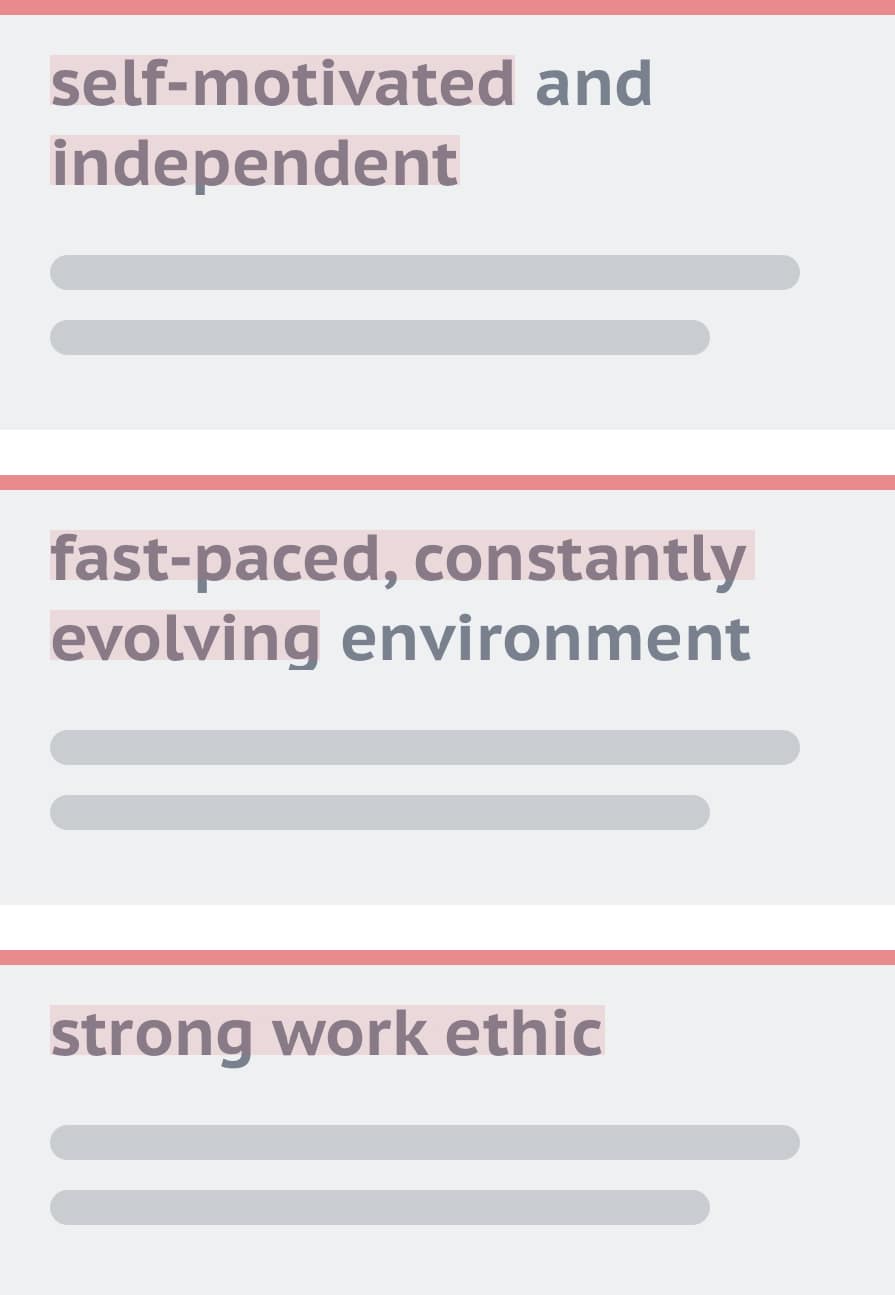A representative candidate pool includes qualified applicants of every ethnicity, self-identified gender, and background. It’s the widest net you can cast and your best chance for finding qualified, diverse candidates.
Let’s look at a simplified, fictional example of how a representative candidate pool can shrink because of mistakes in a job description. And let’s use real-world mistakes taken from actual job descriptions to do it.
Our Representative Candidate Pool
We’re hiring a search engine optimization (SEO) expert, and we’re doing remote hiring so we’re confident we have a good-sized candidate pool. Enough qualified candidates are looking for work that we should be able to find someone great. As long as we get the job description right.

In fact, there are five (fictional) candidates that would be awesome at the position we’re hiring for: Aisha, Brett, Chloe, Diego, and Ethan. We don’t know them yet, but we would definitely want them to join our team if we did. Based on their previous experiences and personalities, all five are more than capable of doing the job and would be great additions to our culture.
However, we’ve inadvertently written a job description that includes a few common mistakes. And while they don’t seem like big mistakes at face value, they’re actually significant and will have a negative impact on our representative candidate pool, as you’ll see.
Job titles for recruiting-based job descriptions serve a unique, external role. Titles are the most important words in your job descriptions because they’re how candidates search for jobs on job boards like Indeed and Glassdoor. Also, they’re a big part of how candidates assess whether to apply.
Often, companies choose unique titles in an attempt to convey company culture. However, unique job titles are harder to find in job searches.

In fact, Aisha is having trouble finding our job at all. We’ve chosen the catchy but obscure title of ‘Search Engine Ninja,’ but when Aisha does a search on Indeed, she looks for ‘SEO Manager’ and ‘SEO Strategist.’ Our job doesn’t even show up, which means Aisha doesn’t even know our job exists.
As a result, she’s out of our representative candidate pool even before we’ve started the applicant review stage of our hiring process.
Aisha: Out (already).

Mistake 2: Long Job Description, Confusing Requirements
Job descriptions shouldn’t be long. On the contrary, job seekers don’t mind shorter job descriptions as long as all the right information is there. But they do mind long ones with confusing requirements.
A lot of job description writers approach them as if the documents somehow take the place of job interviews. They don’t, which means there’s no need to fit everything in. Worse yet, some writers think job descriptions don’t require a lot of attention and, therefore, barely edit them. Instead, they assume the interview process will sort things out.

With our Search Engine Ninja job, we weren’t really sure the exact set of requirements we needed, so we included all the possibles. We realize we may be looking for a ‘unicorn’ (no one is likely to meet all of our requirements), but it’s just a wishlist.
When Chloe, Diego, and Ethan read our job description, they skim through the requirements section without really taking it in. They assume it’s a wishlist or that we’ll clarify more during the interview process.
Brett, however, isn’t feeling it. Between work and life, he doesn’t have much time to look for his next job. Therefore, he’s taking a quality-over-quantity approach, which means skipping overly long or confusing job descriptions.
When Brett browses our requirements list, he balks at the length and also rightly assumes we don’t know exactly what we’re looking for. Those are big red flags for him. In fact, he doesn’t even bother to skim the rest of the description, he just moves on, out of our representative candidate pool.
Brett: Out.

Mistake 3: No Benefits or Perks
The content in your job description (what you choose to include and omit) can say more than your words. You can tell job seekers you value them just by listing your benefits and perks.

With our Search Engine Ninja job, we’ve forgotten to list our benefits and perks. Although we put carefully written wording in the About Us section conveying how much we value our employees, it rings hollow because we didn’t back it up with concrete details.
Diego and Ethan notice the absence but assume we offer decent benefits because of how we’ve spoken about our company culture.
Chloe, however, is a single mom whose current benefits and perks for herself and her son are less-than-stellar. Benefits and perks are, as a result, top of mind for her. In fact, it’s a big red flag that we haven’t listed them, and she doesn’t have time to research our career page to gauge culture. She likes the job but can’t take the chance. She moves on from our representative candidate pool right then and there.
Chloe: Out.

Mistake 4: Language That Excludes
The language we use in our job descriptions can have a major impact on who applies to our positions. In short, our language can exclude some job seekers, particularly those from historically underrepresented groups.

Unfortunately, we’ve included language in our job description that seems innocuous on the surface but is actually problematic. We say we want someone who is ‘self-motivated and independent.’ Also, we want someone who’s comfortable in a ‘fast-paced, constantly evolving environment.’ And we want someone who has a ‘strong work ethic.’
These seem like reasonable requirements, but they give Diego pause when he reads them more closely. Does ‘self-motivated and independent’ mean no supervision? Is a ‘fast-paced, constantly evolving environment’ a euphemism for disorganized trainwreck? And does ‘strong work ethic’ mean a bunch of overtime?
Diego isn’t sure, but he gets an uncomfortable vibe about the job and the team culture he’d be joining. His current employer likes to talk up independence and personal drive but doesn’t give employees agency over their work. Basically, Diego works hard but doesn’t get the time of day from management. And he wants more structure and mentorship in his next role. He moves on, leaving our representative candidate pool.
Diego: Out.

Representative Candidate Pool: All Qualified Job Seekers
We started with a representative candidate pool that was casting a wide net in the recruiting process. It included all qualified applicants, regardless of self-identified gender, demographics, or background. But we lost four out of the five most qualified candidates in our area because of mistakes in our job description.
Yes, we still have Ethan, and he could make a great addition to our team. But what happens if we get further along in the interview process and it doesn’t work out?
Again, this is a fictional example, but it illustrates how you could be hobbling your real-world recruiting process. In fact, these mistakes are all-too-common in real job descriptions. And while we lost four job seekers in our fictional example, you could easily be losing more in the real world.
